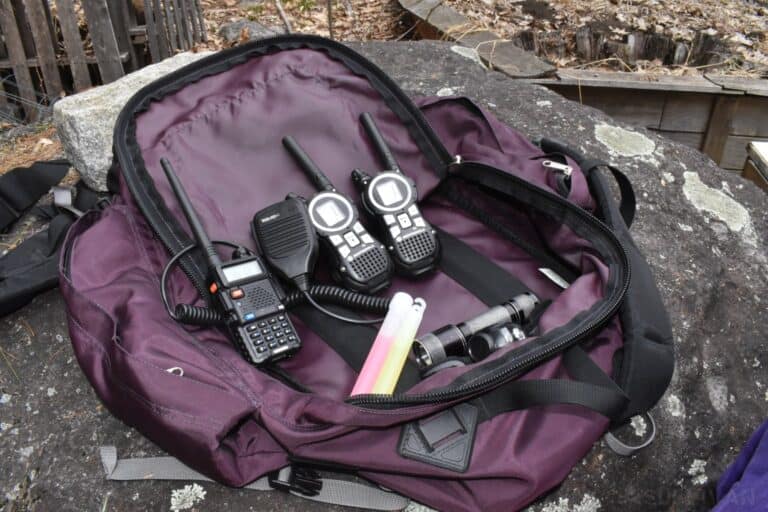If you’ve started to delve into the world of civilian radio, you’ve probably gotten familiar with CB radio as your first stop.
CB radio is great because it doesn’t require licensing, it’s convenient, handy, and affordable. But like all other kinds of radio, there’s still a whole lot to learn. One acronym you’ve probably seen in context with CB is SSB. Just what is an SSB CB radio anyway?

SSB stands for single side band and denotes any CB radio that can make use of this technology to access side bands on each of the 40 channels. They are more powerful, more effective, clearer, and have better range, along with having more channels to talk on.
You can think of SSB CBs as basically upgraded CB radios compared to the ones that came out way back when. They first started getting popular in the 70s and have only grown in popularity since.
If you want to maximize what you can do with your CB radio, SSB is a smart choice, though they do have some drawbacks you’ll need to be aware of. Keep reading to learn more.
How Does SSB Work?
An SSB CB works by eliminating one sideband and the accompanying carrier signal from the transmitted signal on a given channel. This has a two-pronged benefit: requiring less power and also making the signal more efficient.
Think of it this way: whole radio transmissions take up a certain amount of space, which is commonly referred to as bandwidth. When you tune your radio to a specific frequency to send or receive on, you should know that the actual range of the signal is slightly above and slightly below what you dial into.
his actual range, both above and below the designated frequency, is referred to as sidebands, the one under it being the lower sideband or LSB and the one above it being the upper sideband or USB.
An SSB CB radio operates on just one of those two sidebands, hence the designator single sideband. But because of this, this effectively gives them a tighter range to transmit on and means SSB CBs can operate on extra channels, effectively.
When used this way, SSB radio users could be communicating on the same channel, let’s say four, and the users transmitting and receiving on the lower sideband of 19 would not hear or interfere with those operating on the upper side band of the same channel.
Is SSB a Mode or Hardware?
Hardware, specifically. Radios must be built in a specific way to take advantage of SSB capability, and you’ll see the SSB acronym used to refer to these radio sets in addition to the capability they can offer.
Cheaper modern CBs might lack SSB capability, and all of your older sets that were around before the technology was prevalent lack it entirely.
What are the Advantages of SSB?
Make no mistake, SSB CB radios have many advantages, ones you would be wise to take advantage of if you’re interested in CB.
Improved Range
SSB radios are allowed to operate at a higher power level compared to standard CBs which are restricted to just four watts. SSBs can use 12 watts.
This directly translates into significantly improved range, with a high-quality SSB CB, and a correspondingly good antenna, being able to reach out 15 or 20 miles in favorable terrain.
Better Clarity
SSB technology means that users enjoy significantly clearer signals compared to standard AM transmissions. This makes it easier to hear and easier to be heard, improving the overall experience.
Better Battery Life
Despite operating at a higher power level, SSBs are significantly more efficient compared to standard AM CB radios, and this means that your batteries will last longer and they will draw less power generally from any source that they are connected to.
This can be a major consideration if you’re operating off the grid or stranded and need to conserve battery life.
Less Noise
You’ll notice a marked reduction in background noise straight away when using an SSB CB compared to the usual kind. In fact, it’s so significant that this is the primary advantage for some users!
More Channels
SSBs effectively double the number of channels that you can talk on, reducing congestion and giving you more opportunities to find a quiet channel for lengthier conversations. You’ll have 80 channels to choose from, practically speaking, compared to the usual 40 with a normal CB.
Can SSB and Non-SSB CBs Talk to Each Other?
Yes, but only when they are both operating on either AM or on SSB. A person who is receiving on AM will hear a garbled mess if they are receiving an SSB transmission, whereas a person on SSB on the same channel will be able to hear a person transmitting on AM normally.
This can lead to confusion until the two parties are able to work things out, although it’s obviously not an issue when you’re communicating with people that you’ve coordinated with ahead of time.
Are There Any Disadvantages to SSB CB?
SSB is definitely a huge step up when it comes to CB radio technology, and it is a capability that you’d be wise to take advantage of. But like all things, there are trade-offs. Consider the following:
More Complex
SSB radios are more complicated to use, generally. You’ll have more switches and dials to fiddle with, more channels to keep track of, and when communicating with someone for the first time, they’ll have to adjust or tune your clarifier so that they are coming through loud and clear on your side.
More Prone to Certain Kinds of Electronic Interference
SSBs are notable for being more resistant to most kinds of interference and clearer generally, with far less background noise. However, certain kinds of electromagnetic interference, particularly that from solar activity, tends to affect SSB signals more. This is not necessarily a deal-breaker, but just something to be aware of.
Quality Suffers More in Bad Weather
Likewise, SSB has many advantages when it comes to getting your signal out farther and clearer under most conditions, but some users notice that they suffer more overall in bad weather compared to AM transmissions.
Do You Need a License to Operate an SSB CB?
No, you do not. Single sideband CBs, for all of their advantages and improvements, are still considered CB radios and accordingly no license or other requirements must be met to purchase and operate them.
As long as you’re willing to put in a little time to learn how they work, you can take advantage of them immediately.

My dad was military. My grandfather was a cop. They served their country well. But I don’t like taking orders. I’m taking matters into my own hands so I’m not just preparing, I’m going to a friggin’ war to provide you the best of the best survival and preparedness content out there.
